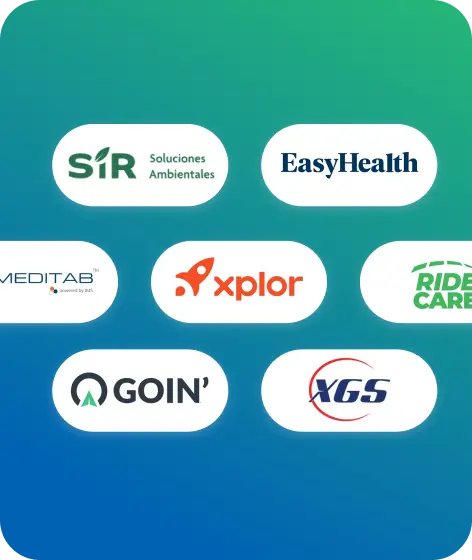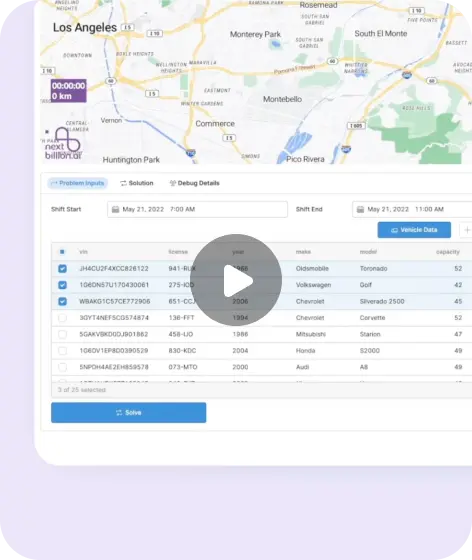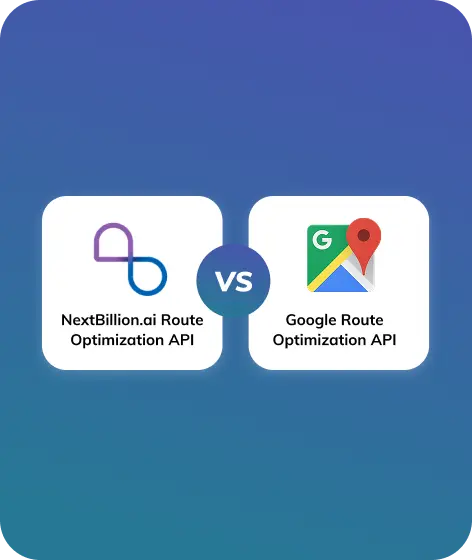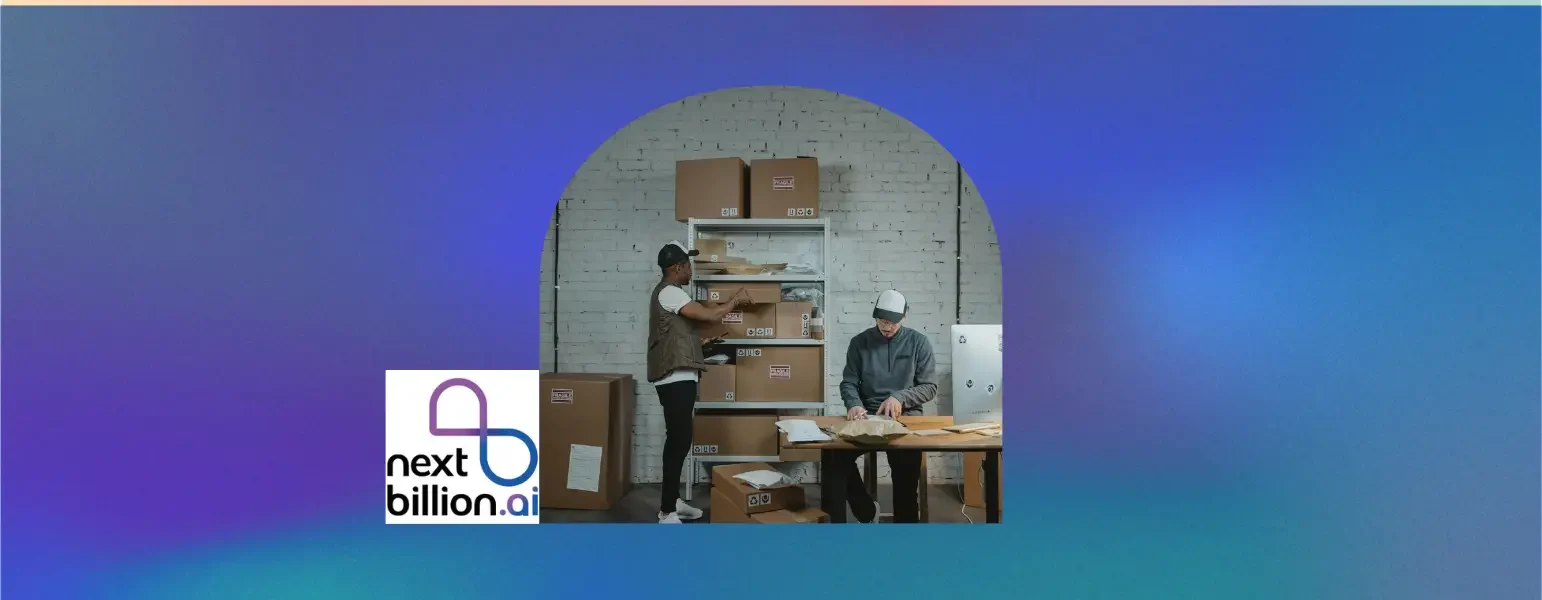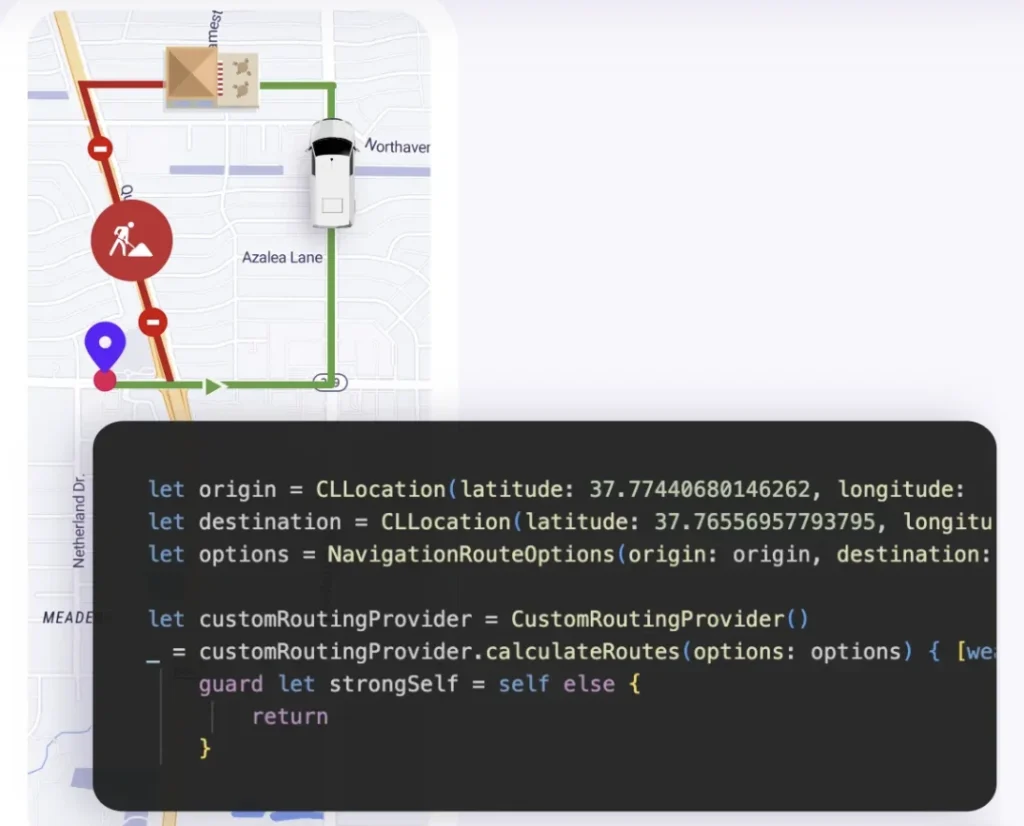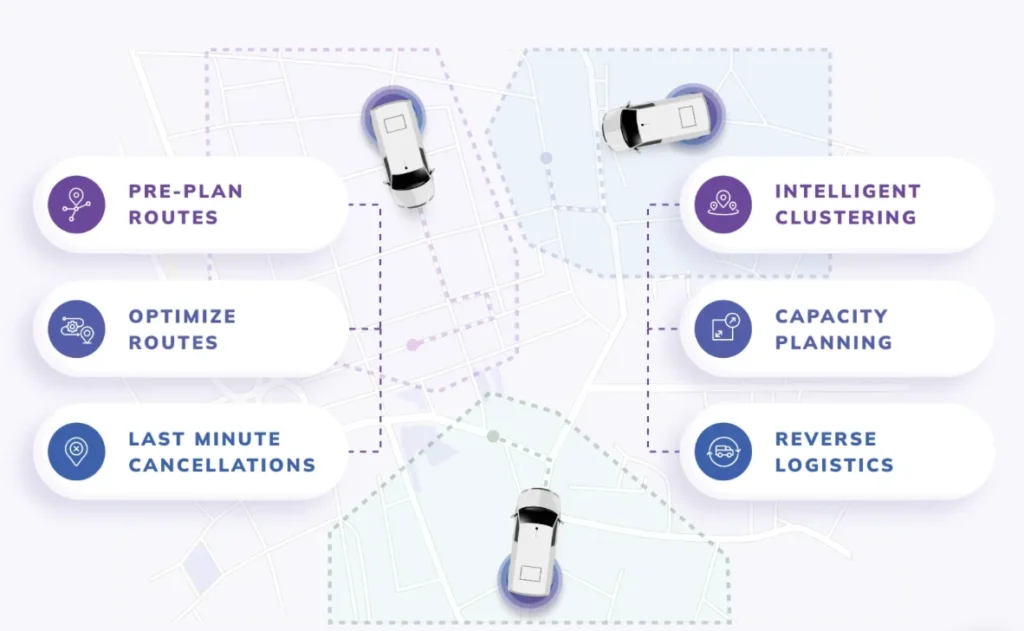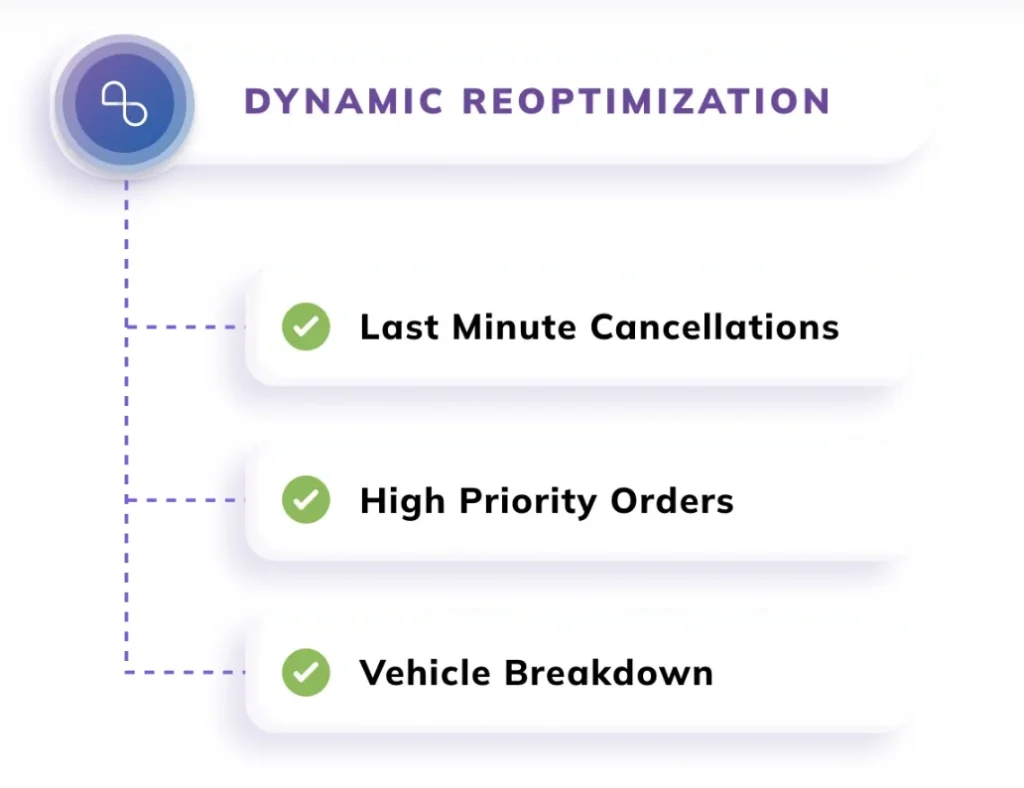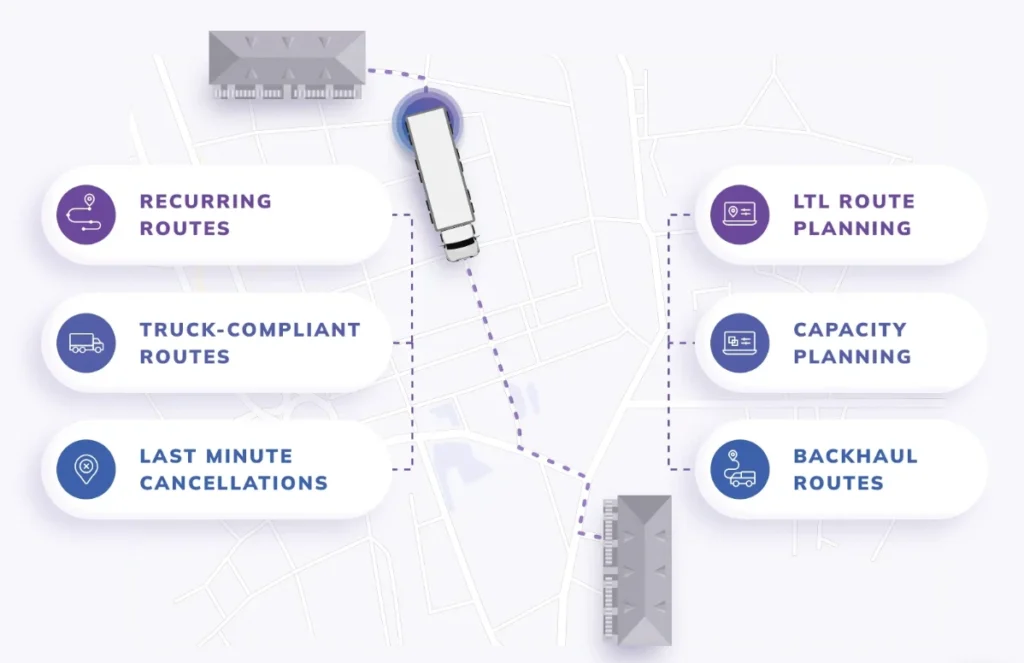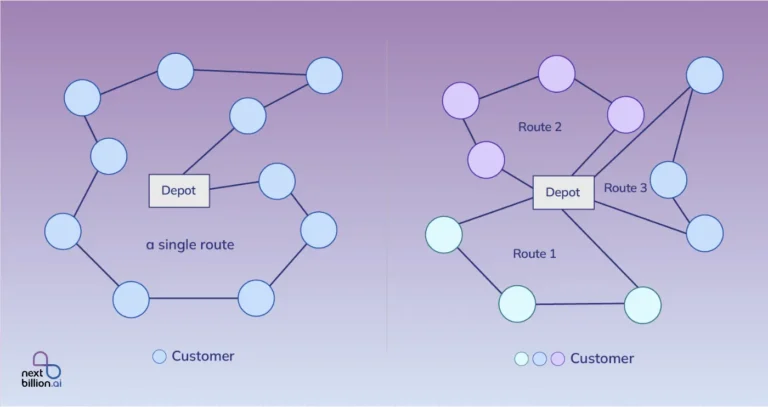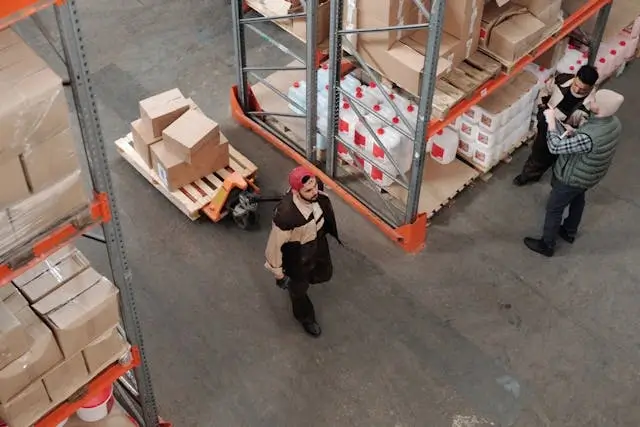
Table of Contents
In this article, we will discuss the Direct Store Delivery (DSD) Model and how you as a Retailer can benefit from this model, what changes should you implement in your current way of delivery and how NextBillion.ai can help you streamline this process.
As a Retailer you would constantly look for innovative methods to boost supply chain efficiency because of the constant change in consumer demands and competition shift.
Some of you might implement a few adjustments to optimize your supply chain, such as a technology upgrade that reduces costs or a process enhancement that saves a few hours here and there. However, little adjustments are insufficient and need more changes in the model you are functioning. If you wish to increase your profits then you might want to think about using a Direct Store Delivery model to eliminate a whole supply chain phase.
What is a Direct Store Delivery model?
It is a retail distribution model where a manufacturer or a supplier delivers goods directly to retailers, instead of sending them through warehouses or distribution centers. This way, there will be no third-party or a middleman involved. Consequently, the DSD model reduces time and cost and increases efficiency and profit.
Direct Store Delivery is not always the most effective choice, nor is it always simple to accomplish. However, when well executed, it can result in significant cost savings and other advantages that can support a company’s future efforts to maintain its competitive edge.
In the following paragraphs, I’ll walk you through the benefits, features, and challenges of the DSD model and how NextBillion.ai can help you grow your business with some best practices.
Direct Store Delivery vs. Centralized Distribution Center
In order to adapt to the Direct Store Delivery model, you must shift focus from your current Centralised distribution center. A centralized distribution center is a central hub where goods are consolidated, managed, and distributed with a strategic logistics approach to different locations.
An alternative to the centralized distribution paradigm is the Direct Store Delivery model. If you adopt the centralized distribution model, you store all of your inventory in a fulfillment center or warehouse. Goods are shipped by manufacturers or suppliers to the fulfillment center or warehouse of that merchant, where they are received and kept until there is an order and it is selected and packaged, it is stored for safety purposes, and it is separated and delivered to various locations. So, the Direct Store Delivery model is a type of decentralised distribution, which means that each retail location will have its own inventory rather than having a single central hub for logistics operation.
However, some decentralized distributions do need a warehouse or fulfillment center, but direct retail delivery never does. In addition to sending stock to retail locations, some companies divide their inventory among several fulfillment centers, each of which is capable of picking, packing, and shipping e-commerce orders.
Direct Store Delivery Trends
New developments from cutting-edge technologies have influenced the direct retail delivery sector. These advanced technologies and developments have helped this distribution model to address challenges and problems the companies are facing. Connecting the dots between suppliers and retailers is a challenge for many direct store delivery services.
But thanks to technology, which enables delivery workers to automatically record and share pickup and delivery operations, that is gradually changing. So, with the latest technology such as GPS and inventory data can be accessed by suppliers and retailers through mobile devices.
Additionally, EDI interfaces and mobile printers make it easier to provide delivery receipts and invoices, ensuring that data is automatically and precisely documented.
Some of the trends toward direct store delivery are being driven by the need to reduce the amount of time spent in the supply chain in order to maintain product freshness. Businesses are accelerating delivery through automated order processing, better route planning with automation and historical data, and more.
Direct Store Delivery Challenges
While there are many advantages to direct-to-store delivery, it is not without its unique set of difficulties. So, consider the following points to know the difficulties that you may face:
- Variable Cost: The direct retail delivery strategy can still be costly when transportation prices increase, even though it does away with labor and storage expenses. Errors in inventory stocking are also more expensive because it costs a lot to receive, refund, and replace the wrong SKUs. This is especially true if you lose out on sales while fixing the issue. It significantly hinders DTC fulfillment. It might be logistically difficult to fulfill DTC e-commerce orders when there aren’t one or more distribution facilities.
- Enhanced Complexity: DSD involves a complex network of coordination between store managers, delivery drivers, and manufacturers. Scheduling disputes, difficulties with billing, and difficulties with inventory management can result from managing this complex network. This complexity can be a major flaw for companies trying to streamline their processes.
- Investment in Infrastructure: DSD requires a strong infrastructure, which includes a fleet of cars, skilled drivers, and cutting-edge route optimization software. All of these things come with a hefty price tag. These upfront and recurring expenses can put a strain on a business’s finances and reduce profitability, particularly for startups or smaller enterprises.
- Scalability Challenges: A company’s DSD operations get more complex as it grows. Scalability problems may arise as a result of this expansion, especially for businesses without the equipment and know-how to oversee a bigger, more complex DSD network.
Add Your Heading Text Here
Using a deliberate strategy is crucial if you want to get the most out of direct retail delivery. When introducing direct store delivery models into your company, you must ensure to adhere to these best practices:
- Create Omnichannel Awareness: You’ll need a single source of truth that spans all of your retail locations and sales channels if you don’t have a single hub to handle inventory, orders, fulfillment, and shipping. With the correct omnichannel solution, you can track key metrics like inventory turnover and average sales for each shop and all of them together, keep an eye on inventory levels across retail locations, and determine which sales channels require improvement.
- Enhance Client Support: Create a feedback loop with your customers to make sure that the direct store delivery strategy can successfully deliver goods to customers. Enhancing your customer service will help you better understand consumer trends, which will help you estimate demand and adjust your manufacturing orders appropriately.
- Ensure that your team has Data Backups: No matter how efficient the supply chain is, information might still be lost. Use user-friendly software that gives all parties access to real-time data to reduce misunderstandings and errors between suppliers and retail locations. In this manner, everyone will have access to the most recent data and be able to restock supplies more efficiently.
Key Tools for Retailers in the DSD Model
Retailers require some important tools for their DSD model to function properly. These tools include Route Optimization API, Geocoding API, Matrix Routing API, Dynamic Routing features, Custom Map APIs, and so on. These tools help to optimise on the routes their drivers take, ensures accurate navigation and delivery points, facilitates bulk delivery planning, adapts routes in un-called for situations, and creates personalised maps to reflect no-entry zones or high-priority stores.
In such cases, you as a retailer must implement a logistics platform into your system for procuring the above-mentioned tools and adapt these features into your system to streamline your DSD process. You can consider NextBillion.ai for such purposes and go for their trial period to know more. In the following sections you can read some important details regarding NextBillion.ai’s features and how it functions.
How can NextBillion.ai help you with Direct Store Delivery?
NextBillion.ai is a global Omnichannel Logistics Platform that can help you streamline inventory management, fulfillment, and shipping across both your B2B and DTC channels.
Key Features of NextBillion.ai’s Direct Store Delivery Model
Here are some key features of NextBillion.ai’s DSD model that you must consider for streamlining your operations, cutting expenses, and simplifying your supply chains.
Enhanced Delivery Efficiency: Fresh foods and other perishable goods have a shorter shelf life and a higher risk of expiration the longer they are in the supply chain. In a similar way, fragile commodities are more likely to sustain damage the longer they are in the supply chain. Eliminating transportation to and from a retailer’s distribution center can completely reduce the frequency of handling delicate items, reducing the possibility of damage, and expedites the delivery of perishable goods to shelves. With NextBillion.ai’s route optimization, suppliers can plan the most efficient delivery schedules, reducing delays and ensuring on-time store replenishment. NextBillion.ai enables retailers to fine-tune map data to reflect their specific operational requirements, such as custom zones for deliveries or store-specific restrictions.
This way NextBillion.ai improves handling of perishable and delicate items.
Cost-effective: Direct shop delivery may be less expensive because there is no need to carry or store consumer goods in a warehouse. With NextBillion.ai’s efficient routing you can benefit from minimising fuel consumption and vehicle wear-and-tear, significantly reducing operational costs for suppliers and retailers.
Faster delivery to retail locations: Inventory can reach retail locations more quickly because it is sent straight from the manufacturers or suppliers. NextBillion.ai’s solutions reduce transit times for consumer goods enabling merchants to guarantee better product availability and increased inventory turnover, which is crucial for convenience stores with limited shelf space as well as CPG brands. Even for perishable goods like dairy, bakery items, and fresh produce, NextBillion.ai’s solutions minimize transit times, ensuring products reach stores at peak freshness.
Enhances consumer satisfaction: Customers are less likely to encounter stockouts and are more likely to locate the things they desire in immaculate condition more rapidly when retail places stock more promptly and affordably. This helps you grow your clientele and improves consumer happiness. By ensuring well-stocked shelves and timely deliveries, retailers can enhance the shopping experience, driving customer loyalty.
The following are some of the core technical features of NextBillion.ai that describes how NextBillion.ai functions to achieve the above mentioned tasks:
- Plan multi-stop delivery routes with dream constraints (but without nightmares in your API bills): Control the total cost of fulfillment and prevent on-road surprises with 50+ hard and soft constraints and custom maps.
- Long haul tracking – Get legally compliant routes for your drivers to move heavy goods or hazmat across states or national borders.
- Last Mile delivery – Get accurate routes to deliver orders from your stores and to the doorsteps of your end customers.
- Field services – Get realistic routes for your field agents to carry out a series of repairs or jobs matching their skills and territory.
- Middle Mile logistics – Get cost-effective routes to move truckloads of goods from consolidation centers to customers.
- Optimize On-Demand Delivery With Order Batching and Territory Planning – Predict accurate ETAs, generate efficient mixed-fleet routes and optimize real-time dispatch with low-latency APIs and SDKs. Track fleet vehicles in real time, along with reliable ETAs based on real-time traffic data. Live Tracking, ETAs and Alerts. Set up notifications for various triggers like vehicle speeding, excessive idling, assets passing through specified custom boundaries and more.
The following are the NextBillion.ai APIs, SDKs and tools that work together to form on-demand delivery solution:
- Route Optimization API: Get efficient routes for your vehicle drivers and field service agents to perform a series of deliveries or tasks such as generating truck-safe routes and optimizing custom travel cost.
- Distance Matrix API: Get accurate transit ETAs and distances from all origins to destinations without high cost or latency.
- Navigation SDK: Render maps and routes in your mobile and web apps. And generate turn-by-turn directions to transit from one point to another.
Ensure Reliable, Cost-Effective, On-Time Last-Mile Delivery – Simplify pre-planning, capacity planning and zone-based allocation for deliveries. Drive operational flexibility and reliability with dynamic route reoptimization. Advanced route planning: Generate the optimal routes to fit your fleet and delivery operations. Ensure maximum efficiency with zone-based allocation, support for multiple vehicle profiles, and custom cost matrices for each vehicle.
Dynamic Reoptimization – Use dynamic reoptimization to update in-progress routes on the fly. Accommodate inevitable ad-hoc jobs, last-minute cancellations and reprioritizations without sacrificing efficiency or service levels.
Accurate capacity planning – Accurately predict delivery capacity availability for upcoming time slots based on current capacity usage. Run simulations for varying capacity and mixed-fleet scenarios at no extra cost for optimal planning.
Live tracking and delivery alerts – Monitor operations via live tracking and ETAs; share this information with customers to keep them informed about order status and improve the delivery experience. Prevent missed deliveries with geofence-based alerts.
Optimize Middle-Mile Logistics and Backhaul Routes – Generate truck-specific, regulation-compliant routes amenable to last-minute changes. Seamlessly integrate with your existing TMS and telematics platforms.
Intelligent Truck Routing: Get regulation-compliant routes for various types of trucks. Account for factors like truck type, weight and dimensions; type and weight of cargo; special permissions, and time- and vehicle-based restrictions.
Best Practices for Implementing NextBillion.ai’s DSD Model
- Collaborate with Suppliers: Align goals and share delivery schedules to ensure seamless integration of NextBillion.ai tools.
- Leverage Real-Time Insights- Utilize live tracking data to monitor and refine delivery operations, responding quickly to issues as they arise.
- Train Teams – Ensure in-store and logistics teams are familiar with NextBillion.ai’s platform to maximize its capabilities.
- Measure and Optimize – Track key performance metrics such as delivery times, fuel savings, and on-time rates to assess the impact of the DSD model and fine-tune strategies.
Industries Benefiting from NextBillion.ai’s DSD Model
Food and Beverage
Brands like dairies and beverage companies can benefit from reduced transit times and better route planning.
Consumer Packaged Goods (CPG)
Retailers can ensure consistent supply of high-demand items through optimized delivery schedules.
Pharmaceuticals
Critical, time-sensitive deliveries like medical supplies reach stores faster with precise routing.
Why Choose NextBillion.ai for Your DSD Needs?
From all the above points mentioned, it is clearly visible that NextBillion.ai can be an ideal solution for your Direct Store Delivery needs. It helps in optimising routes to specific delivery locations addressing traffic, weather conflicts, and road disruptions. NextBillion.ai’s APIs can manage your needs with scalability whether your fleet is small or large. NextBillion.ai’s APIs are so flexible that it can integrate with logistics and supply chain management systems effortlessly. The app can be used on different platforms. By minimizing fuel consumption and delivery times, NextBillion.ai reduces operational costs while enhancing customer satisfaction with on-time, reliable service. Trusted globally, it’s designed to adapt to the unique challenges of industries like FMCG, retail, and food delivery.
Conclusion
NextBillion.ai’s Direct Store Delivery model is a game-changer for retailers aiming to optimize their supply chain. With advanced tools for route optimization, real-time tracking, and customized maps, retailers can streamline their operations while maintaining control over costs and improving customer satisfaction. Embrace NextBillion.ai’s Direct Store Delivery (DSD) solutions to transform your delivery processes and stay ahead in the competitive retail landscape.
So act swiftly and book a Demo now <CTA> with NextBillion.ai to experience its DSD solutions and how it can transform your business.
About Author
Prabhavathi Madhusudan
Prabhavathi is a technical writer based in India. She has diverse experience in documentation, spanning more than 10 years with the ability to transform complex concepts into clear, concise, and user-friendly documentation.

